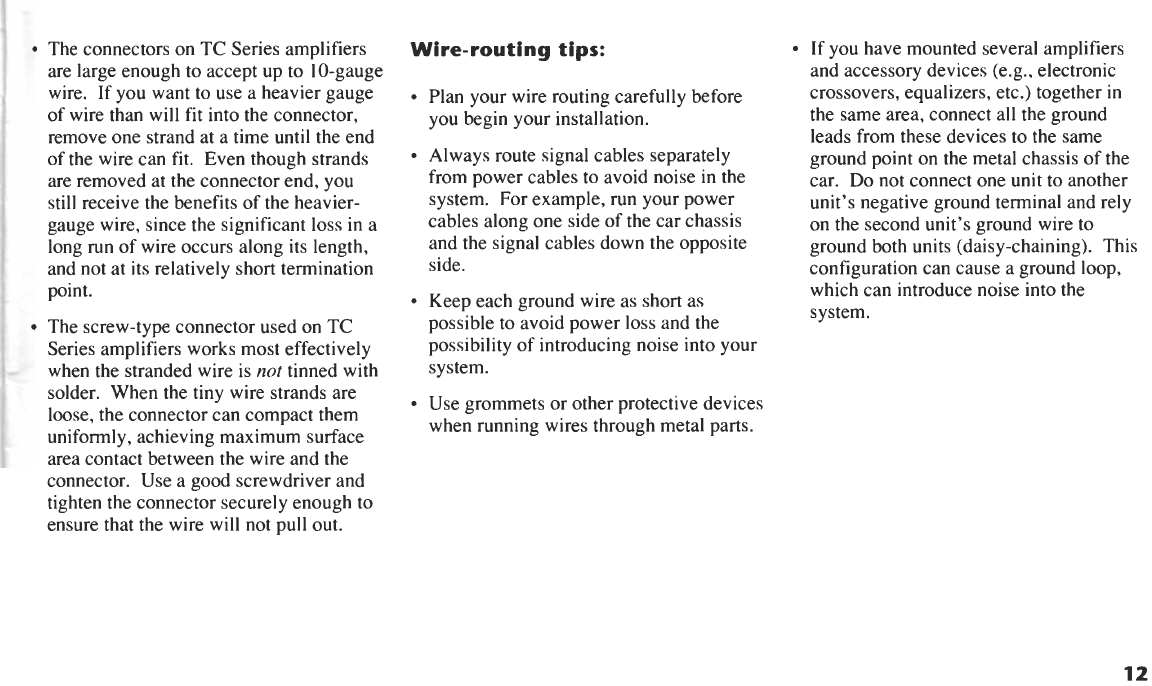
The connectors on
TC
Series amplifiers
are large enough to accept up to 10-gauge
wire. If you want to use a heavier gauge
of wire than will fit into the connector,
remove one strand at a time until the end
of the wire can fit. Even though strands
are removed at the connector end, you
still receive the benefits of the heavier-
gauge wire, since the significant loss in a
long run of wire occurs along its length,
and not at its relatively short termination
point.
The screw-type connector used on
TC
Series amplifiers works most effectively
when the stranded wire is
not
tinned with
solder. When the tiny wire strands are
loose, the connector can compact them
uniformly, achieving maximum surface
area contact between the wire and the
connector. Use a good screwdriver and
tighten the connector securely enough to
ensure that the wire will not pull out.
Wire-routing tips:
Plan your wire routing carefully before
you begin your installation.
Always route signal cables separately
from power cables to avoid noise in the
system. For example, run your power
cables along one side of the car chassis
and the signal cables down the opposite
side.
Keep each ground wire as short as
possible to avoid power loss and the
possibility of introducing noise into your
system.
Use grommets or other protective devices
when running wires through metal parts.
If you have mounted several amplifiers
and accessory devices (e.g.. electronic
crossovers, equalizers, etc.) together in
the same area, connect all the ground
leads from these devices to the same
ground point on the metal chassis of the
car. Do not connect one unit to another
unit's negative ground terminal and rely
on the second unit's ground wire to
ground both units (daisy-chaining). This
configuration can cause a ground loop,
which can introduce noise into the
system.


















